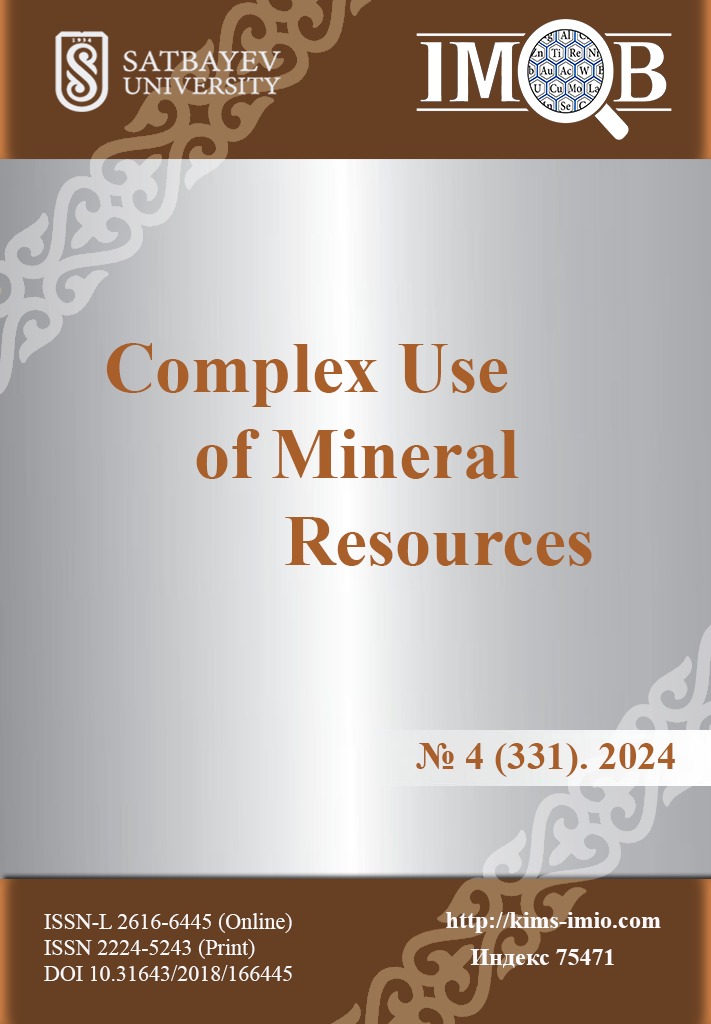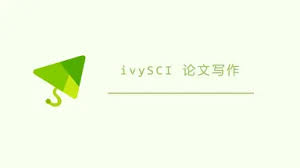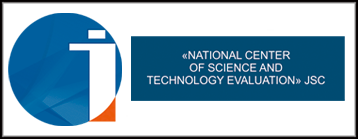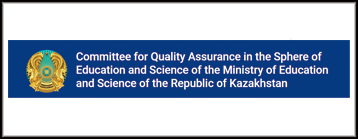Geochemistry of Rare Earth Elements in Pahang River Sediment, Malaysia
DOI:
https://doi.org/10.31643/2024/6445.37Keywords:
XRD analysis; Rare Earth Elements; Pahang River, Organic MatterAbstract
Rare earth elements (REE) are a set of 17 chemically similar metallic elements including 15 lanthanides, scandium and yttrium. The current status of REE as a global strategic commodity has encouraged the identification of REE ore deposits. This research is carried out to identify the mining feasibility of fluvial sediment REE and to understand the sediment's physical and chemical characteristics and effects on the geochemical behaviour of REE in the longest river of Peninsular Malaysia namely Pahang River. Surface sediment samples were collected along Pahang River (n=44) in approximately 10 km distance intervals. The sediment samples were analyzed using XRF to determine the major oxide content. Meanwhile, REE content in the sediment samples was extracted using the Total Digestion method and analysed using ICP-MS. The results show the average value of ΣREE at surface sediments of the Pahang River is 42.58 ppm and can be considered too low to be economically mined. Each area shows higher fractionation of light REE than heavy REE with negative europium anomalies, suggesting sediments in this area were derived from felsic rocks. The concentration of REE in Pahang River surface sediments was controlled by the porosity and organic matter as showed by the correlation of ΣREE with porosity (R2=0.65) and organic matter content (R2=0.71). In conclusion, this research's findings are generally useful for further REE mineral exploration and fluvial sediment environmental monitoring.
Downloads
References
Department of Survey and Mapping Malaysia (JUPEM). Keluasan Malaysia (Malaysia Area). Retrieved on November 18, 2023. (in Malay.). http://www.data.gov.my/data/ms_MY/dataset/keluasan-malaysia
Sathiamurthy E. River discharge characteristics of major east coast rivers of Peninsular Malaysia into South China Sea. 1stInternational Workshop on the Fluvial Supply to the South China Sea,Shanghai, China. 2008;
McLennan S, Murray R. Geochemistry. Springer: Dordrecht, Netherlands, Germany. Geochemistry of sediments.1998, 282-292.
Boggs S. Principles of sedimentology and stratigraphy. 4thed. Pearson Prentice Hall: Upper Saddle River, New Jersey, USA.2006.
Nichols G. Sedimentology and Stratigraphy, 2nded. Wiley-Blackwell Malden: Massachusetts, USA. 2009.
Wu K, Liu S, Kandasamy S, Jin A, Lou Z, Li J, Shi X. Grain-size effect on rare earth elements in Pahang River and Kelantan River, Peninsular Malaysia: Implications for sediment provenance in the southern South China Sea. Continental Shelf Research. 2019; 189:103977. https://doi.org/10.1016/j.csr.2019.103977
Balaram V. Rare earth elements: A review of applications, occurrence, exploration, analysis, recycling, and environmental impact. Geoscience Frontiers. 2019;10(4):1285-1303. https://doi.org/10.1016/j.gsf.2018.12.005
Kragh H. Chemical Sciences in the 20th Century: Bridging Boundaries. in Reinhardt C(Ed.). John Wiley & Sons: Weinheim, Germany. From geochemistry to cosmochemistry: The origin of a scientific discipline. 2008; 1915-1955:160-192.
Scott S. Treatise on Geochemistry in Holland H, Turekian K. (Eds). Elsevier: Italy.Volume Editor's Introduction. 2014; XXIII-XXV.
Complex Use of Mineral Resources. 2024; 331(4):42-50 ISSN-L 2616-6445, ISSN 2224-524350
Yusof NN, Abd Azis MN, Yusoff NM. Exploring the Impact of Plasmonic Nanoparticles on Photoluminescence of Er³⁺ -Doped Sodium Zinc Tellurite Glass for Solid-State Laser Applications. Kompleksnoe Ispolzovanie Mineralnogo Syra. 2023; 330(3)85-91. https://doi.org/10.31643/2024/6445.32
Volodin V, Tuleushev Y, Kenzhaliyev B, Trebukhov S. Thermal degradationof hard alloys of the niobiumcadmium system at low pressure. Kompleksnoe Ispolzovanie Mineralnogo Syra. 2020; 312(1):41-47. https://doi.org/10.31643/2020/6445.05
Shaari HR, Azlan MN, Azlina Y,et al.Investigation of Structural and Optical Properties of Graphene Oxide-Coated Neodymium Nanoparticles Doped Zinc-Tellurite Glass for Glass Fiber.J Inorg Organomet Polym. 2021; 31:4349-4359. https://doi.org/10.1007/s10904-021-02061-7
Azlan MN, Hajer SS, Halimah MK,et al.Comprehensive comparison on optical properties of samarium oxide (micro/nano) particles doped tellurite glass for optoelectronics applications.J Mater Sci: Mater Electron. 2021; 32:14174-14185. https://doi.org/10.1007/s10854-021-05961-z
Shafiee NS, Bahar AM, Ali Khan MM. Potential of Rare Earth Elements (REEs) in Gua Musang Granites, Gua Musang, Kelantan. IOP Conference Series: Earth and Environmental Science. 2020;549:012027. https://doi.org/10.1088/1755-1315/549/1/012027
Shaari H, Nasir QM, Pan HJ, Mohamed C, Yusoff AH, Khalik WW, Anthony EJ. Sedimentation andsediment geochemistry in a tropical mangrove channel meander, Sungai Kerteh, Peninsular Malaysia. Progress in Earth and Planetary Science.2020;7(46). https://doi.org/10.1186/s40645-020-00362-y
Yusoff AH, Mohamed CAR. Natural Radionuclide of 230Th in Malaysian Harbor Sediments. International Journal of Advanced Science and Technology. 2019;28(18):65-71.
Wu K, Liu S, Shi X, Lou Z, Kandasamy S, Wu B, Mohamed CAR. Distribution of rare earth elements in surface sediments of the western Sunda Shelf: Constraints from sedimentology and mineralogy. Continental Shelf Research. 2020;206:104198. https://doi.org/10.1016/j.csr.2020.104198
Herron MM. Geochemical Classification of Terrigenous Sands and Shales from Core or Log Data. Journal of Sedimentary Petrology. 1988;58(5):820-829. https://doi.org/10.1306/212F8E77-2B24-11D7-8648000102C1865D
Scibiorski E, Kirkland CL, Kemp AS, Tohver E, Evans NJ. Trace elements in titanite: A potential tool to constrain polygeneticgrowth processes and timing. Chemical Geology. 2019; 509(8):1-19. https://doi.org/10.1016/j.chemgeo.2019.01.006
Flemming BW, Delafontaine MT. Encyclopedia of Estuaries. Encyclopedia of Earth Science Series in Kennish MJ(Ed.). Springer:Dordrecht.Mass Physical Sediment Properties. 2016.
Downloads
Published
How to Cite
Issue
Section
License
Copyright (c) 2023 Chang, C. S., Yusoff, A., Mohamed, C., Liu, S., Shoparwe, N., Husain, N., & Azlan, M.

This work is licensed under a Creative Commons Attribution-NonCommercial-NoDerivatives 3.0 Unported License.


























